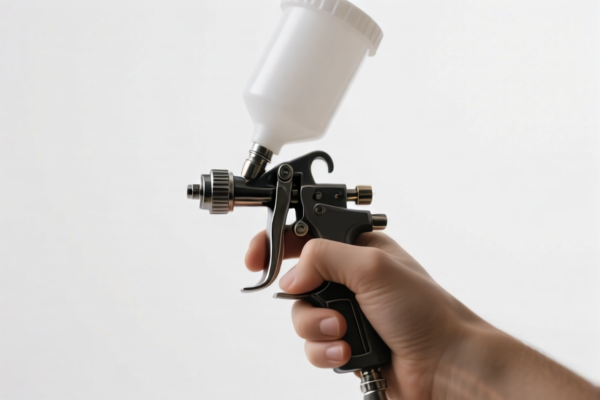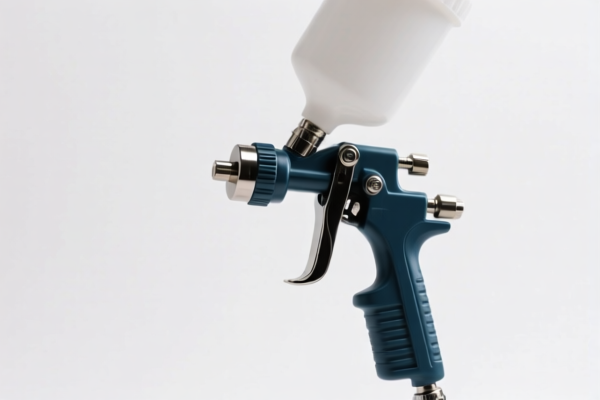| HS Code | Official Doc | Tariff Rate | Origin | Destination | Effective Date |
|---|---|---|---|---|---|
| 8206000000 | Doc | The rate of duty applicable to that article in the set subject t+30.0% | CN | US | 2025-05-12 |
| 8424201000 | Doc | 57.9% | CN | US | 2025-05-12 |
| 8424209000 | Doc | 55.0% | CN | US | 2025-05-12 |
| 3923900080 | Doc | 58.0% | CN | US | 2025-05-12 |
| 3923500000 | Doc | 60.3% | CN | US | 2025-05-12 |




Spray Tool Kit
A spray tool kit encompasses a collection of implements designed for the application of liquids in a dispersed form, typically paints, coatings, lubricants, cleaners, or other fluids. These kits cater to a broad range of applications, from automotive refinishing and industrial coatings to DIY home improvement and hobbyist projects.
Materials
Components of a spray tool kit are constructed from various materials selected for durability, chemical resistance, and compatibility with the fluids being applied. Common materials include:
- Metal (Aluminum, Stainless Steel): Used for gun bodies, fluid cups, and nozzles due to strength and resistance to corrosion.
- Plastic (Nylon, Polypropylene): Employed for components like cups, fittings, and housings, offering lightweight and chemical resistance.
- Rubber/Seals (Viton, Neoprene): Used for gaskets, O-rings, and seals to prevent leaks and maintain pressure.
- Brass: Frequently found in air fittings and regulators.
Purpose
The primary purpose of a spray tool kit is to deliver a controlled and even application of liquids. This offers advantages over brushes or rollers, including:
- Speed: Faster coverage of large areas.
- Finish: Smoother, more uniform coatings with minimal brush marks.
- Efficiency: Reduced material waste.
- Access: Ability to reach complex shapes and tight spaces.
Function
Spray tool kits function by converting liquid into a fine mist or spray pattern. Key components and their functions include:
- Air Compressor: Provides a source of compressed air to atomize the liquid.
- Spray Gun: The core component, responsible for mixing air and liquid and delivering the spray.
- Fluid Cup: Holds the liquid to be sprayed. Types include gravity-feed, siphon-feed, and pressure-feed.
- Nozzle: Controls the spray pattern (fan width, shape) and flow rate.
- Regulator: Maintains consistent air pressure.
- Air Hose: Connects the compressor to the spray gun.
- Filters: Remove moisture and contaminants from the air supply.
Usage Scenarios
Spray tool kits are employed in a diverse range of applications:
- Automotive Painting: Refinishing vehicles, applying primers, clear coats, and base coats.
- Wood Finishing: Applying stains, lacquers, varnishes, and polyurethanes.
- Industrial Coatings: Applying protective coatings to metal surfaces, machinery, and equipment.
- DIY Home Improvement: Painting walls, furniture, fences, and other surfaces.
- Hobby & Craft: Applying paints, inks, and coatings to models, artwork, and crafts.
- Agricultural & Pest Control: Applying pesticides, herbicides, and fertilizers.
Common Types
Spray tool kits are categorized by the technology used for atomizing the liquid:
- HVLP (High Volume Low Pressure): Most common for professional applications. Offers high transfer efficiency (minimal overspray) and a fine finish. Requires a powerful compressor.
- LVLP (Low Volume Low Pressure): Similar to HVLP but requires less compressed air. Suitable for smaller projects and less demanding applications.
- Airless: Uses high pressure to atomize the liquid, eliminating the need for compressed air. Ideal for large projects and thick coatings.
- Compressed Air (Conventional): Older technology, less efficient than HVLP or LVLP.
- Electrostatic: Charges the liquid as it's sprayed, improving transfer efficiency and coverage. Used for specialized applications.
- Pre-mixed Aerosol: Self-contained spray cans. Convenient for small projects but offer limited control and finish quality.
The declared goods, “spray tool kit,” refer to a collection of tools designed for applying liquids or powders through spraying mechanisms, typically sold as a retail package.
The following HS codes are relevant based on the provided information:
- 8206000000: This HS code covers tools of two or more of headings 8202 to 8205, put up in sets for retail sale. This is a strong candidate as a spray tool kit is a set of tools. The applicable duty rate is the rate applicable to the article in the set, plus a 30.0% additional tariff effective after April 2, 2025.
- 8424201000: This HS code covers mechanical appliances (whether or not hand operated) for projecting, dispersing or spraying liquids or powders; fire extinguishers, whether or not charged; spray guns and similar appliances; steam or sand blasting machines and similar jet projecting machines; parts thereof: Spray guns and similar appliances: Simple piston pump sprays and powder bellows. If the kit contains simple piston pump sprays or powder bellows, this code applies. The total tariff rate is 57.9% (2.9% base tariff + 25.0% additional tariff + 30.0% additional tariff effective after April 2, 2025).
- 8424209000: This HS code covers mechanical appliances (whether or not hand operated) for projecting, dispersing or spraying liquids or powders; fire extinguishers, whether or not charged; spray guns and similar appliances; steam or sand blasting machines and similar jet projecting machines; parts thereof: Spray guns and similar appliances: Other. If the kit contains spray guns or similar appliances that are not simple piston pump sprays or powder bellows, this code applies. The total tariff rate is 55.0% (0.0% base tariff + 25.0% additional tariff + 30.0% additional tariff effective after April 2, 2025).
Please note that the applicable tariff for HS code 8206000000 will depend on the composition of the set. The tariff will be calculated based on the rate applicable to each article within the set.
Customer Reviews
No reviews yet.